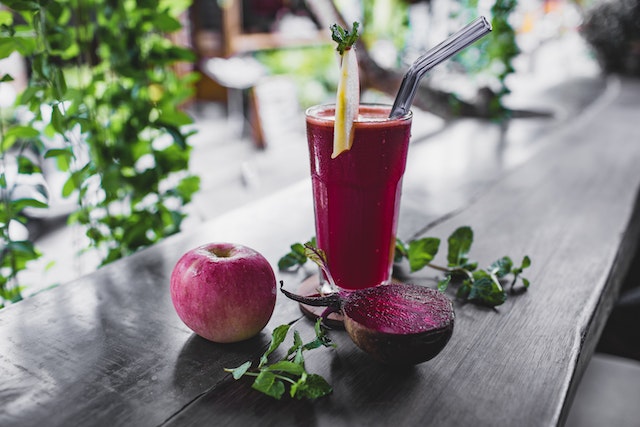Javanese culture is a culture that is adhered to by the Javanese people, especially in the areas of East Java, the Special Region of Yogyakarta, and Central Java. Javanese culture is one of the most popular cultures in foreign countries. Here are some facts about Javanese culture that you need to know to increase your knowledge about the cultural diversity of the archipelago:
1. Happy with Sweet Foods
Javanese people are known to like sweet foods. This is proven by typical Javanese food, which mostly tastes sweet. Examples are bakpia, warm rice, chicken opor, tongseng, liwet rice, petis salad, dumplings, and many others. It is said that this sweet food was born because, during the Dutch era, the Javanese were forced to plant sugar cane for sugar factories. After sugar was allowed to be consumed by the natives, all foods were processed into sugar. However, not all Javanese are happy with sweet foods. In East Java, the taste of food is not as sweet as in Central Java and Yogyakarta.
2. Javanese
Javanese people use Javanese in their daily life. This language is usually used by residents in Central Java, Yogyakarta, and East Java. But not only on the island of Java, but this Javanese language is also used in several areas outside Java, such as in Lampung, Jakarta, North Sumatra, East Kalimantan, Jambi, South Sumatra, Riau, and Aceh. The use of the Javanese language is also found outside Indonesia, some of which are in Suriname, the Netherlands, French Guiana, and Venezuela.
3. Dances
The Javanese people have many traditional dances that were born from the daily life of the Javanese. Some of the well-known dances include the Ebeg dance (Banyumas), the Cakil dance and the Kuda Lumping dance (Central Java), the Golek Menak dance (Yogyakarta), and the Reog dance (East Java). Reog is one of the most famous dances originating from Java. Reog dancers dance until they fall into a trance, and can even eat glass. Even though it feels scary, this dance always attracts the interest of tourists.
4. Heritage Temple
The temple is one of the relics of the Javanese kingdoms that once stood. On the island of Java, it is recorded that there are more than 50 temples that are still standing strong. Some of the famous heritage temples in Java are Borobudur Temple and Prambanan Temple. Even Borobudur Temple had become part of the 7 wonders of the world.
5. Gamelan
One of the traditional musical instruments originating from Java is the gamelan. Gamelan is a musical ensemble that features metallophones, xylophones, drums, and gongs. Gamelan uses 4 kinds of instruments, namely colotomic instruments such as kempyang, percussion, and gong. Then the balungan instrument consisting of slentho, panerus saron, bird saron, and others. Then there are also the panerusan instruments consisting of bonang, gender, xylophone, zither, flute, and fiddle. And the last one is unpitched instruments, namely drums, drums, kecer, kempyak and kepyak.
6. Martial Arts
Silat is a traditional martial art from Java. The martial arts school that was first established was named Kali Majapahit which came from the ancient Majapahit kingdom. Another Javanese silat school is Perisai Diri which was founded by the late RM Soebandiman Dirdjoatmodjo. This silat school developed throughout Java and Indonesia, even as far as America and Europe. It is not surprising that silat competitions are now held in various national and international silat competitions.
7. Javanese calendar
The Javanese calendar is a calendar that combines Islamic culture, Javanese Hindu-Buddhist culture, and European culture. In this calendar, there are two cycles of days used. The first is the weekly cycle which consists of 7 days like the Gregorian calendar. The second is the Pecan Pancawara cycle which only consists of 5 market days. Market day as a benchmark for finding a good day is still maintained by the Javanese who hold on to their traditions. The Javanese calendar is also listed in the general calendar, which makes it easier for the Javanese to see market days.
8. Value Higher Education
Javanese people really value education. This is proven by the fact that the father of Indonesian education, namely Ki Hajar Dewantara, is a Javanese and he is a pioneer of education in Indonesia. The first medical school in Indonesia, namely STOVIA, was founded in Java. In addition, in this modern era universities on the island of Java are ranked the best in Indonesia. In fact, in the National Science Olympiad competition, it was noted that regions on the island of Java won the most in this national-level science competition.
9. Jung Ship
The Jung ship is a traditional Javanese ship that is believed to have been used by the Javanese during the previous royal era. This ship is also called the Borobudur ship because it was found as a depiction of a Jung ship in the reliefs of the Borobudur temple. This ship is equipped with two steering rods in the shape of oars, and a screen that resembles a rectangle. The hull of the Jung ship was made by connecting the boards to the keel of the ship, which was then connected to wooden pegs without using a frame, bolts, or iron nails.
10. The Remaining Kingdom of Java
In ancient times, many kingdoms stood in Java such as the Mataram Hindu kingdom, the Majapahit kingdom, the Singasari kingdom, and other kingdoms. However, now the remaining Javanese kingdom is only 4 kingdoms. The kingdoms are the Sultanate of Cirebon, the Sultanate of Yogyakarta (Ngayogyakarta Hadiningrat), the Sultanate of Surakarta, and the Kanoman Sultanate of Cirebon. These governments still stand firm in the Indonesian homeland and hold their culture and traditions firmly.
11. Javanese Literature
The history of Javanese literature since the 9th century is divided into 4 periods, namely the period of old Javanese literature, the period of middle Javanese literature, the period of new Javanese literature, and the period of Modern Javanese literature. Initially, the Javanese language was written in a script derived from the Pallawa script originating from South India. This script later developed into the modern Javanese script, namely Hanacaraka which is still used today.
12. Kejawen
Kejawen is a belief held by the Javanese and other ethnic groups who live in Java. Since ancient times, the Javanese have recognized the oneness of God, which is also the core of Kejawen teachings. Kejawen teachings have several missions, including “Mamayu Hayuning Pribadhi”, which means mercy for oneself, and ” Mamayu Hayuning Bhuwana ” which means mercy for the universe.
13. Dagger
Keris is one of the traditional weapons belonging to the Javanese tribe. This traditional weapon is pointed and sharp on both sides. The keris is very easy to distinguish from other sharp weapons, because of its distinctive shape, namely the blade which is winding and asymmetrical at the base which is widened. In the past, keris was used as a weapon in war. But now the keris is more likely to be a fashion accessory and a cultural symbol.
14. Traditional Clothing
Javanese traditional clothing is called kebaya. However, there are slight differences in the way of wearing and the kebaya motifs worn by Javanese people. For example, in East Java, the way to wear the kebaya reflects strictness and simplicity. While the way to wear kebaya cloth in Central Java illustrates the behavior of polite Central Javanese people wrapped in philosophy in batik cloth. In addition, there are also differences in the head cover worn.
15. Batik
Batik is a traditional art that originates from Java. The word batik comes from the Javanese language ” tik” which means point or make a point, which later developed into the term “batik”. Batik is a printed cloth made of wax. Initially, batik was made on a white cotton cloth called Mori cloth. However, in modern times, batik cloth is made on top of other materials such as silk and polyester. Batik motifs are drawn using a canting which emits wax.
Those are some facts about Javanese culture, which is one of Indonesia’s cultural heritage. In fact, some Javanese cultures, such as kebaya and batik, have become one of the national cultures worn not only by Javanese but also by Indonesians in general.














